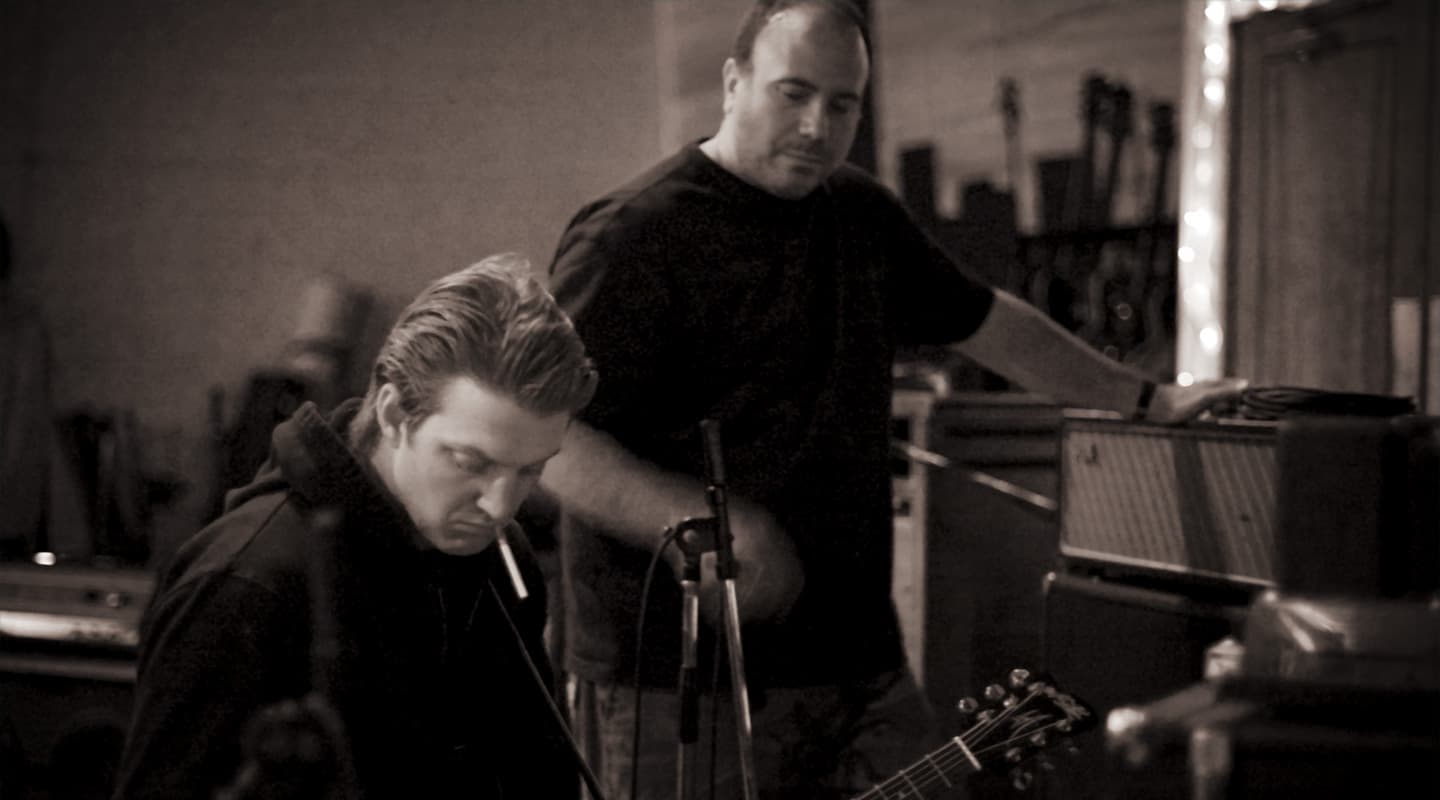
Joe Barresi: King Of The Rock Age
When it comes to the production of volume-to-11 rock there’s no-one better than Joe Barresi – the latest offering from Queens of the Stone Age, Lullabies to Paralyze, is testament to that. Paul Tingen finds out how this complex, ear-invading metal monster was assembled.
Back in the 1960s, Phil Spector’s influential approach to mega-sized production was described by the now legendary term ‘wall of sound’. Forty years later, Californian producer and engineer Joe Barresi is attempting to inch ahead of Spector with a sound that’s so massive, hard-hitting, and in-your-face that it can perhaps best be described as a ‘wall of rock’.
A sustained listening to music produced, engineered, and/or mixed by Barresi is like surfing a Tsunami and being crushed by a quarry-load of boulders at the same time. Whether this leads to an exhilarating adrenaline rush or a desperate lunge for the paracetamol is a matter of taste, but Barresi is undoubtedly setting new sonic standards for the production of turbo-charged, volume-to-11 rock.
The best-known example of Barresi’s sonic barrage is Queens of the Stone Age. He engineered, mixed and co-produced the band’s eponymous debut album (1998), as well as their recently released fourth offering, Lullabies to Paralyze. Co-producer on both albums was bandleader, guitarist, singer, and songwriter Josh Homme. Lullabies to Paralyze has been well received and in interviews, Homme has described the relationship between himself and Barresi as “bordering on telepathy”, and complimented the producer on working for the band, and “not for anyone else” – an apparent reference to record company pressures. And so, with full creative control and a much larger budget to work with than before, Homme and Barresi set out to experiment more than ever and, said the latter, “create something unique.”
“The band rehearsed the songs at Rancho de la Luna studios [in Joshua Tree National Park in Southern California]” explained Barresi. “When they came back to LA, I sat in on a couple of rehearsals and it was mainly a matter of me learning the music and seeing what worked, sonically, guitar- and tempo-wise, and so on. Then we loaded all the gear into Sound City studios and spent the first day sorting through it, plugging things in and deciding what would sound good for what parts. We had a massive array of amplifiers, guitars and drums, including some of my own stuff…”
VINTAGE KING
When Barresi spoke about “some of [his] own stuff,” he was, perhaps momentarily, under the spell of the British art of understatement, for he’s the proud owner of a rather extravagant collection of assorted boxes, guitars and amplifiers. As he put it, “I have 250 guitar pedals, probably close to 45 guitars, 75 guitar amps (35 combos and 40 heads), and countless pieces of outboard gear. Altogether enough to fill a garage.”
To be more specific, Barresi’s gear includes over 30 microphones (from the likes of Royer, Neumann, Shure, Sennheiser), almost 40 compressors (TubeTech, Focusrite, EMI, Neve, Trident, Urei, etc), 30 mic pre’s (Studer, Sontec, Pultec, API, Urei, Joe Meek, Quad Eight, etc), and some more esoteric stuff he’d rather not see in print. The sheer number as well as the nature of these boxes reveals much about Barresi’s approach to engineering, for many affect the front end of recording, and most are analogue, valve, and/or vintage.
“I like to focus on things like: how a part is played, what guitar is played, where you position amplifiers, the drums, and the vocalist, what console you track on, the kind of mics and mic preamps you use, and so on,” stressed Barresi. “A few nights ago I spent hours A/B-ing Neve and Quad Eight mic preamps. Stuff like that matters to me. Gear with personality is mandatory and every little bit helps. Analogue gear allows me to experiment and not sound like everybody else. If I was lazy, I’d just put a plug-in on something, but instead I prefer to pick the right compressor or microphone, or get the mic placement right. All this is about the art of making records, which I think is getting lost at the moment.”
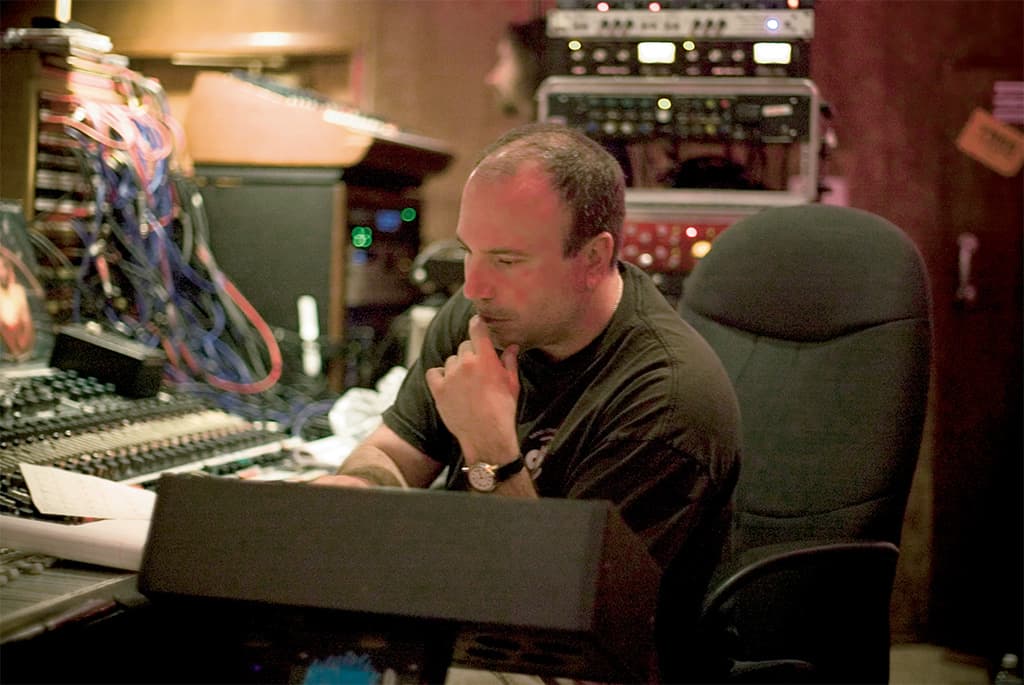
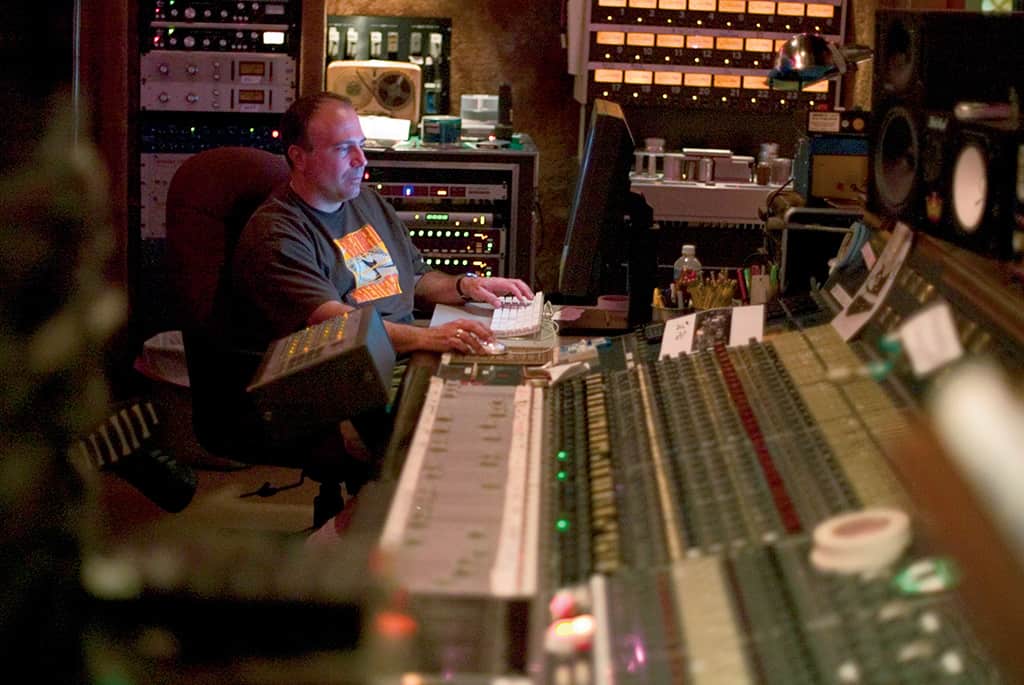
we tried to get a different sound for each song, and even for sections of songs, trying out different microphones than the ones I would normally use
SCHOOL OF ROCK
As a keen student of the art of recording, Barresi is an avid reader of recording books, magazines, and enjoys watching any kind of making-of documentary. “What really blew my mind,” he explained, “was watching this documentary recently about the making of Who’s Next and seeing Glyn Johns push up just four faders and hearing what I’ve been listening to for three quarters of my life! Amazing. These days everything seems to be about musical ‘perfection’, optimum recording levels, complete isolation on each microphone, and so on. It’s just ridiculous. I like recording straight to analogue tape without click-tracks and without listening to whether this particular beat is ahead or behind. And that’s what we did with Lullabies to Paralyze.”
Further prodding for details of the recording of the latest QotSA album was met with occasional resistance on Barresi’s part, apparently out of respect for Homme, who likes to shroud the recording process in secrecy. Luckily Barresi was happy to spill the beans on the tricks and working methods that were his own territory.
“I try not to use the same thing twice. If I used an Echoplex on the first Queens record, I wouldn’t bring that the second time round. The making of Lullabies was also experimental in the sense that we tried to get a different sound for each song, and even for sections of songs, trying out different microphones than the ones I would normally use. It was like a recording dream, because not only were the songs good, the guys amazing players, and the record fun to make… it was also like going back to recording school.”
For each track the group and Barresi would experiment until they were happy with a combination of certain instruments, amplifiers, pedals, microphones, and their placements. Then, continued Barresi, “We went for it and tracked the song. We cut drums, bass, and two guitars completely live on all the songs. Medication, Little Sister, This Lullaby, and Tangled Up In Plaid, were all done in one take. On other songs we did some very minimal editing of different takes. Then we’d punch in anything that needed to be fixed. The beauty of this approach was that at the end we basically had the bed tracks done, and I don’t think we did too many overdubs.”
WEIRD STUFF
To capture Queens Of The Stone Age, Barresi used a combination of his more standard approach to recording guitars, bass, and drums (see Barresi’s Guide To Miking Up The Volume box item), and some wild variations on this. He elaborated on some of the specifics, beginning with the album’s deceptively gentle opening, the acoustic sounding This Lullaby, featuring only Homme on guitar and Mark Lanegan on vocals.
“We tried a million times to capture the right moment, and we finally got it while I was already mixing the album. Josh and Mark were in the studio lounge, sitting in the couch, chilling out, and I had a mic in front of Mark, while I recorded Josh’s hollow body electric guitar acoustically and the guitar amp in the bathroom. Actually, 90 percent of the guitars on the album were hollow body. Josh also did some whispery background vocals through a mic that was patched through an analogue guitar pedal reverb.
Following This Lullaby is the full-on Medication, a shift which is a bit like being whacked over the head with a piece of four-by-two while dozing in your rocking chair. According to Barresi, “The song was intentionally made to sound like the first album, it was like a ‘welcome back’ to the listener. After this there was a lot of experimentation in sections of songs. We’d experiment with maybe changing the drum kit around so the texture was different, or have everyone in a circle looking at each other and putting a couple of guitar amps in this circle. We might put a mic up in the middle and cut a whole song like that, with a lot of bleed.”
One song that saw a lot of experimentation was the album’s lengthy centrepiece, Someone’s In The Wolf. With its long, impressionistic middle section it almost comes across as a slice of 1970s prog rock. “The band laid the song down live with the middle section in there,” revealed Barresi, “and we then overdubbed all sorts of studio experiments to it. Josh had been reading a lot of Grimm fairy tales, and wanted it to sound something like that, with two children locked up, like Hansel and Gretel, and the big bad wolf outside.
“So we had Chris Goss come in and he made all kinds of kitchen noises, like a tea kettle whistling and the chopping of a knife and the rustling of the pages of a recipe book. These things were recorded on individual tracks and then bussed to one track. So the middle bit of the song has a whole montage of sounds, and multiple guitar parts. Alain Johannes also played Markxophone on the section – a weird little instrument that you pluck which vibrates multiple times. There’s also some slide guitar going on. All the slide lap-steel stuff went through a little Rivera amp, with an Echoplex and other weird stuff.”
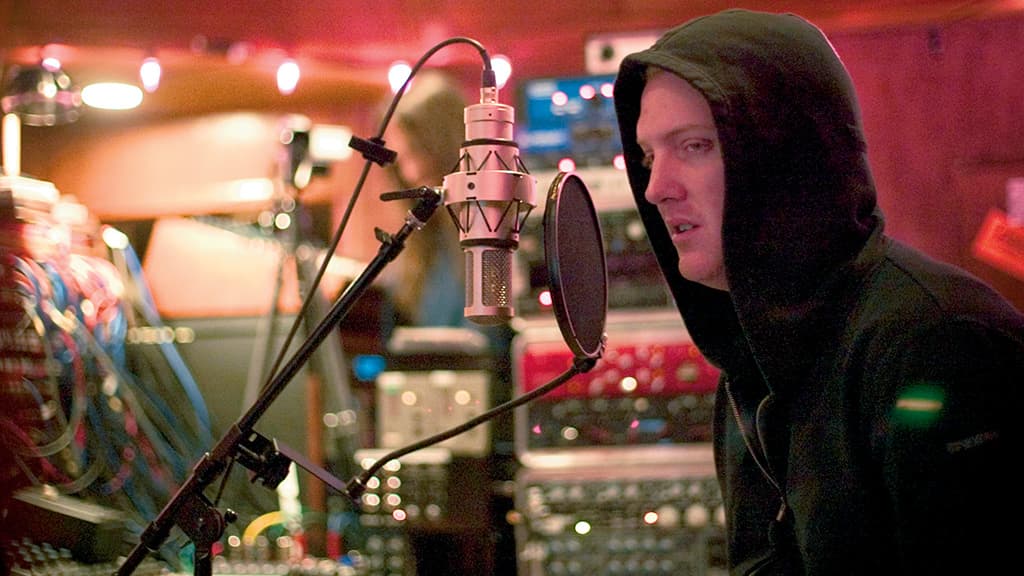
TRIPPED OUT
While Homme is adamant that Queens of the Stone Age isn’t a heavy metal band, much of the music on Lullabies To Paralyze is of the eardrum-assaulting, compressed-to-death variety. It’s a perfect complement to Barresi’s wall-of-rock approach to recording. But, as ever with QotSA, there are surprising leftfield turns, such as the opening to The Blood Is Love, which with its three/four time signature, clean guitars (one called a ‘circus guitar’), weird sound effects, and cheesy drums, sounds like it comes from a different musical universe.
“We wanted a circus feel,” stated Barresi, “and you can’t have a big rock circus feel. So we made it like merry-go-round type music, with a swirling feeling. The ‘circus guitar’ is a hollow-body through a weird little combo amp and a bizarre microphone. There was also a mic in the middle of the group. I think that intro had only three or four mics. We did the whole song like that, but decided that this only suited the intro, so we went back to a big rock approach. The shift from the intro to the big rock section was an analogue tape edit, a hard cut. There were a lot of intentional contrasts on the record in general: soft versus hard, very dry sections versus very wet sections, dry lead vocals and wet background vocals and vice versa.”
Another striking contrast is offered by the bonus track Like a Drug (only included on the album’s special edition CD/DVD version), which sounds like a psychedelic 1960s number: all hazy, wistful vocals, jangly guitars, laid-back rhythm section, and very gentle, open production. Even stranger is that it’s one of the tracks on the album featuring guitarist Billy Gibbons of ZZ Top, himself no stranger to the hard-hitting, wall-of-rock approach to music.
“It’s kind of crazy,” said Barresi. “The four guys and Billy are all playing together, with Josh singing into an amplifier, and every mic in the room wide open. That’s where all the space comes from. I did two different analogue mixes and loaded them into ProTools to line them up to see if I wanted to cut sections from one mix to the other. I then started nudging one of the mixes slightly ahead or behind, getting a phase going. When I played the mixes together it totally tripped it out, and was just the effect we were looking for. So I ended up putting the two mixes on top of each other like that. It’s got a vibe.”
TAPE & TOOLS
Almost the entire Lullabies to Paralyze was recorded through Sound City’s Neve 8028 desk, with ample usage of some of Barresi’s mic preamps, to a Studer 24-track tape machine, as well as ProTools HD. “I brought in some Helios and Telefunken V76 preamps,” explained Barresi. “Just fat-sounding boxes. There’s nothing on the album that didn’t touch the Neve at some stage. Also, everything went to tape, but in cases where I’d filled up all 24-tracks I’d record the rest into ProTools.
“A lot of the vocals went right into ’Tools as well, through several preamps. Some of the vocal sounds were pretty complex. Sometimes they were treated, or I’d use an additional mic that was slightly overdriven, or they were sung through an amplifier or a Leslie cabinet, things like that. I might use two or three microphones on a vocal, and a lot of times I would print the components separately, so I could re-balance later when needed. Of course this would eat up a lot of tracks.”
ON TAPE…
“I love the sound of the analogue tape machine,” says Barresi, “and I don’t use Dolby. Never. For the kind of music I work on it’s hardly necessary. I’m not doing super-hi-fi recording. I also think that noise is a good thing. The hiss is like reality for me.
“Another thing I love about analogue tape is that it forces you to commit early. Like, here’s the guitar sound on one track, as opposed to using 15 microphones on a cabinet and putting them all on separate tracks. I don’t think you can build an idea of how the song is going to sound in that way. To me recording a song is like building a house. There’s a floor and walls, a ceiling and a roof. How can you figure out what your roof is going to be like when you don’t know what your walls are made of? When I mix, I get a lot of projects that have been recorded on ProTools where I spend ages trying to work out what the actual guitar or drum sound is. It bums me out.”
The whole idea of perfect music is just ridiculous to me, unless you’re making dance music and you want that hypnotic effect. I find playing to a click and then gridding things insane
Barresi’s Guide to Miking up the Volume
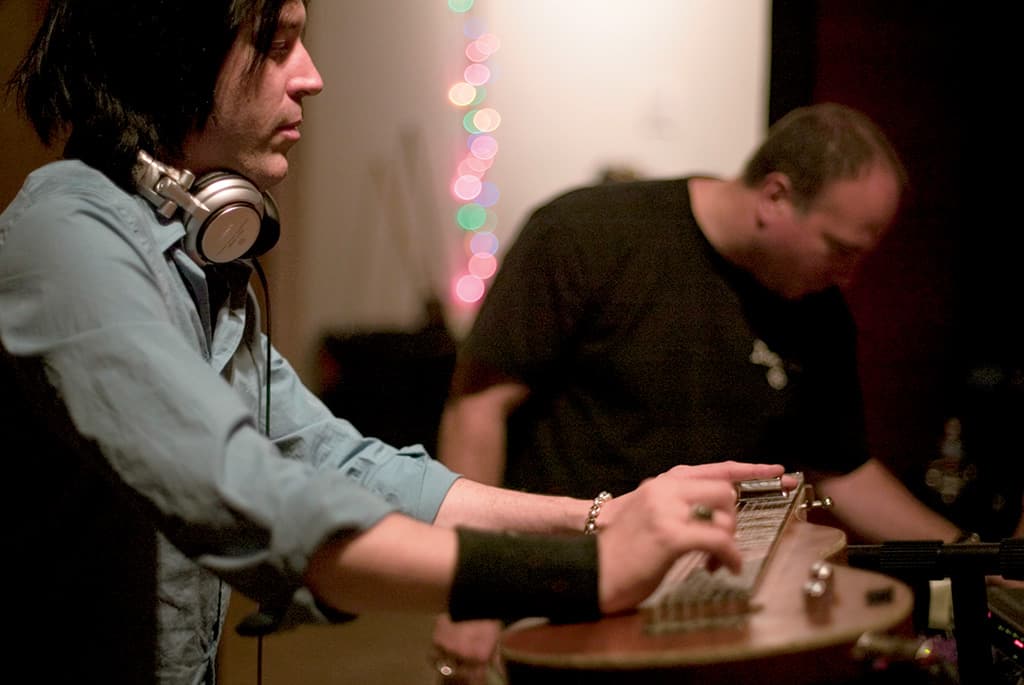
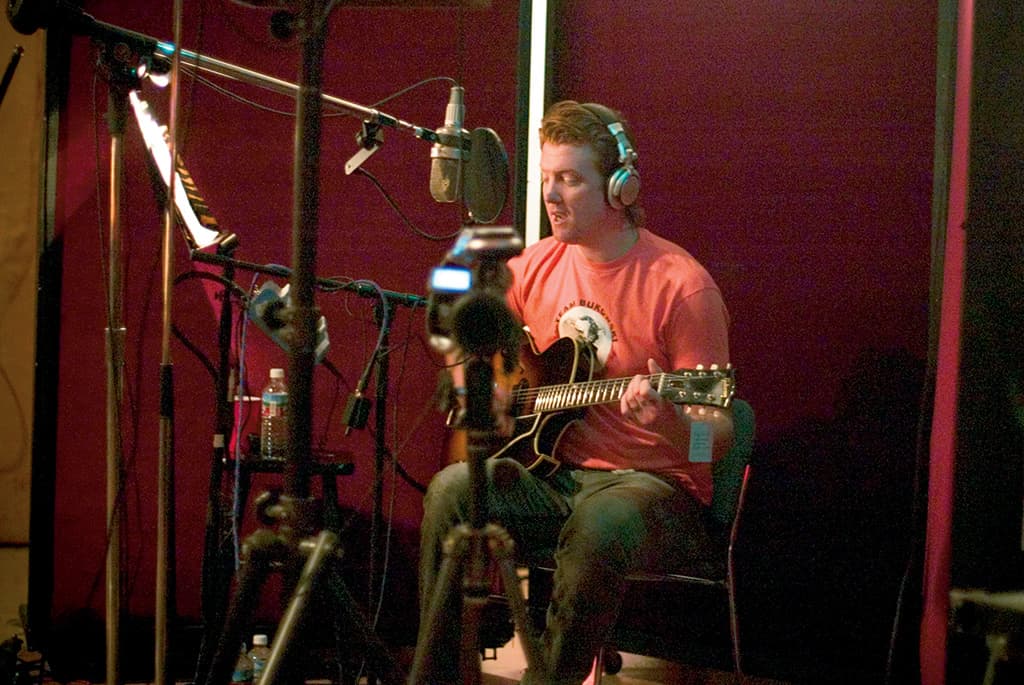
USE YOUR EARS
According to Barresi, another issue with recording on computers is that the focus shifts from the ears to the eyes. “You’re not supposed to look at music! A friend of mine, engineer Mark Dearnley, an amazing engineer and avid ProTools fan, did four albums for AC/DC. He once held his hands 30 inches apart and said, ‘imagine this is a piece of tape and here’s the kick drum in the middle. The bass is going to be a little bit behind, over here, and the guitar player will be a bit ahead, over to the right of the down beat, and essentially your entire downbeat will sound huge!’ The moment you start looking at music you start lining things up and your down beat starts to shrink, which threatens to remove the push and pull that makes music come alive.
“The whole idea of perfect music is just ridiculous to me, unless you’re making dance music and you want that hypnotic effect. I find playing to a click and then gridding things insane. You find yourself fixing things as opposed to listening to the music. We never used a click track with the Queens.
“Doubling music with VocalAlign or using AutoTune on a vocal is equally ridiculous. The whole idea is to use your ears and double things until they sound good. Listen to old records. I think that some people these days decide that when they hand in a project that’s perfectly in tune and time, they’ve done their job as a producer. But at the same time they’ve taken the life out of it and made things perfectly unmusical. What’s the point of that?”
MORTAR MIX
It’s at the mixing stage that a number of important secrets of Barresi’s volume-to-11 trade came to the fore. Analogue outboard gear and guitar pedals play crucial roles here too, explaining why he opted to mix via an analogue desk to half-inch tape (among several other formats including ProTools, DAT and CD). “I mixed the whole record at Bay 7 Studios in Los Angeles,” Barresi explained, “because of their G+ series SSL. They also have a lot of vintage outboard gear and two great Studer 24-track tape machines. Also, I use this thing called a PCP Instrument Distro, which allows me to take three XLR signals off tape and convert them to ¼-inch jack. It allows me to set up three pedals in a chain, and have them as three mono outboard boxes.
“The ProTools rig that we had didn’t have many plug-ins on it, which was perfect. There are a couple of plug-ins that I like, but in general I’m not a fan. And besides, I don’t need Bomb Factory’s emulation of an 1176 when I’m surrounded by real 1176s! If I use any kind of plug-in, nine times out of 10 it will be a de-esser, because they’re quick and very controllable. I have to say that I do love [Audio Ease] Altiverb [convolution reverb] too. But in general I don’t think there are enough unique-sounding plug-ins out there. I have three Boss overdrive pedals, and they all sound different; analogue effects have much more character.”
When nagged further about the ins and outs of his wall-of-rock sound, Barresi soon landed on a not-so-secret ingredient. “I use a lot of compression, obviously: the EMI TG12413, Focusrite Red 3, TubeTech LCA 2B, dbx 160, Neve 33609 or 2254, things like that. I also spend a lot time riding the faders when I’m mixing, so I can retain some dynamics and separation and the individual sounds are still recognisable and hard. I’m a big fan of parallel compression, so I’ll often mix in non-compressed sound with compressed sound to maintain the transients. Or I may use the console compressor on the SSL on an individual channel and bus my whole drum kit to a TubeTech compressor or something. Also, in general I try not to over-EQ stuff, unless it’s to get a particular sound. I’d rather get the sound I want out of the microphone. It does start there. It all starts at the source.”
















RESPONSES